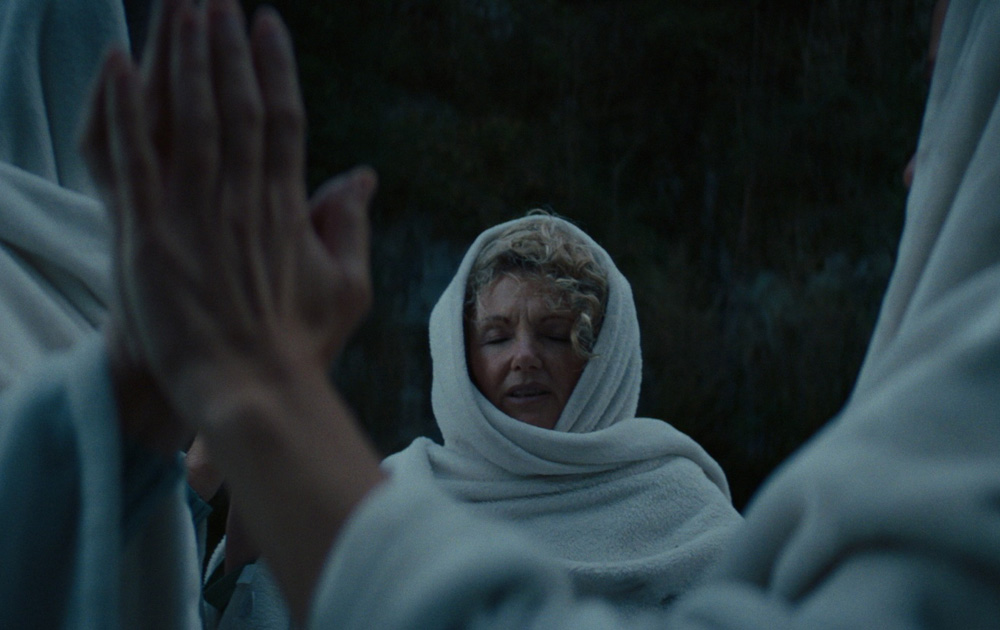At a certain point in “Shadowland,” Richard Stanley remembers how watching Andrei Tarkovsky’s “Stalker” gave him a way to understand the mystery of life, finding the Soviet surrealist speaking the same language as he did in the recesses of his mind and part of what set him on a path to become a filmmaker. In some circles, Stanley is held in similar regard to Tarkovsky, uncompromising when it comes to his art and notoriously elusive – Tarkovsky’s untimely death at just 54 robbed the world of him as his work was getting to be better known in the 1980s while Stanley went into exile after he was fired from “The Island of Dr. Moreau,” his shot at a film where a major studio would back the scale his early features “Hardware” and “Dust Devil” could only hint at – and as “Shadowland” director Otso Tiainen finds, he retreated to the French Pyrenees where he could essentially live out the fantasy he wasn’t able to put on screen in adapting the H.G. Wells’ novel about a mad scientist that has created a hideaway to experiment as he sees fit. In this scenario, Tiainen is the visitor who makes a crash landing and can’t help but be fascinated by what he sees as Stanley and others in the Pyrenees were brought to Montsegur, due to its religious significance when a group of outcasts denounced by the Catholic Church in the 14th century were thought to willingly walk into fire, and plot a revival of the Cathar religion.
Montsegur is frequently referred to as “the zone,” acknowledging its unique position on a loosely defined border between France and Spain, yet those who believe it is a sacred place spiritually find that abstract term appropriate as well when as Stanley says it “exists between universes.” A third meaning emerges in “Shadowland” when Tiainen has to know that the primary audience for the film is already familiar with Stanley and likely his more recent exploits while never assuming as much on screen for the benefit of the uninitiated, making the film itself somewhat uncharted territory as it contends with the domestic abuse allegations leveled against Stanley in 2015 that appear to be just as much a reason he’s taken refuge in the Pyrenees as any other. Tiainen and his crew are clearly caught off-guard, as are the locals who primarily get their information only from Stanley in the remote region, and while it would be hard for me to imagine what someone without any previous knowledge of Stanley would make of the early part of the film in which Tiainen seems to be delaying the inevitable by presenting Stanley as an equal among the alternative thinkers who have found community in the village, the film is compulsory viewing once it accepts that he is the star attraction and begins to wonder how much he’s crafted his own mystique.
Initially, “Shadowland” admirably attempts to rewire one’s brain as Stanley’s was by Tarkovsky to take in a view of the Pyrenees as he sees them, filming the mist rolling off mountains and forests that would seem to hold their share of secrets with a widescreen grandeur and the voice of Anaiya Sophia, an area priestess, reverberating through the hills as she’s broadcast throughout the land outlining its mythological history. The director is given further stature by how Tiainen introduces him, walking around town like the “Dark Tower” gunslinger Roland Deschain, donning a floppy hat and a cape, albeit slightly slower with a staff for support that only makes him appear more regal. Others who have settled in the region after itinerant lives aren’t as snappy dressers and when comparing him to Uranie and Iranom, two unkempt locals who appear to have broken out of an institution as they engage in occult rituals involving swords and sacrifice, Stanley carries himself as a leader in a religion that ideally is egalitarian.
“Shadowland” may spend a little too much time holding up a similar facade even for those unaware of how it’ll all come tumbling down when it is able to quickly establish the world that Stanley, Uranie, Iranom and Anayia Sophia and her cadre of followers have established for themselves and the dynamic between them, occasionally making displays of their eccentricities gratuitous. However, Tiainen and crew make the most of what ends up unfolding before their lens when Stanley’s direct participation in the film allows one to understand his fanciful perspective on all things, having a way with words throughout that assure he is in fact well-suited for telling stories, and how presentation has become everything as the director’s reputation as a visionary who constantly challenges the system — and won a number of fans for his contrarianism — could simply be someone good at hiding his personal and professional failings in the narratives he creates.
As unsettling as “Shadowland” is, it was even more so when it premiered at Beyond Fest in Los Angeles where a decade earlier “Lost Soul: The Doomed Journey of Richard Stanley’s ‘Island of Dr. Moreau’” first screened, helping to burnish his legend as a renegade, and although there’s no reason to believe that wasn’t a fair way to look at the director at the time, the reappraisal offered by Tiainen doesn’t only seem necessary specifically concerning Stanley, but a general warning against deifying artists, particularly those that seem to invite it. Perhaps “Shadowland”’s most impressive feat is honoring the hold a good story can have over its audience, first by trafficking in the same style of atmospheric world-building that Stanley built a following on and then becoming captivating in its own right without making anyone feel foolish for following along and rather than suggest that anyone who invested in Stanley was wasting their time, it turns out there was more to his story than even he could know.
“Shadowland” does not yet have U.S. distribution.




